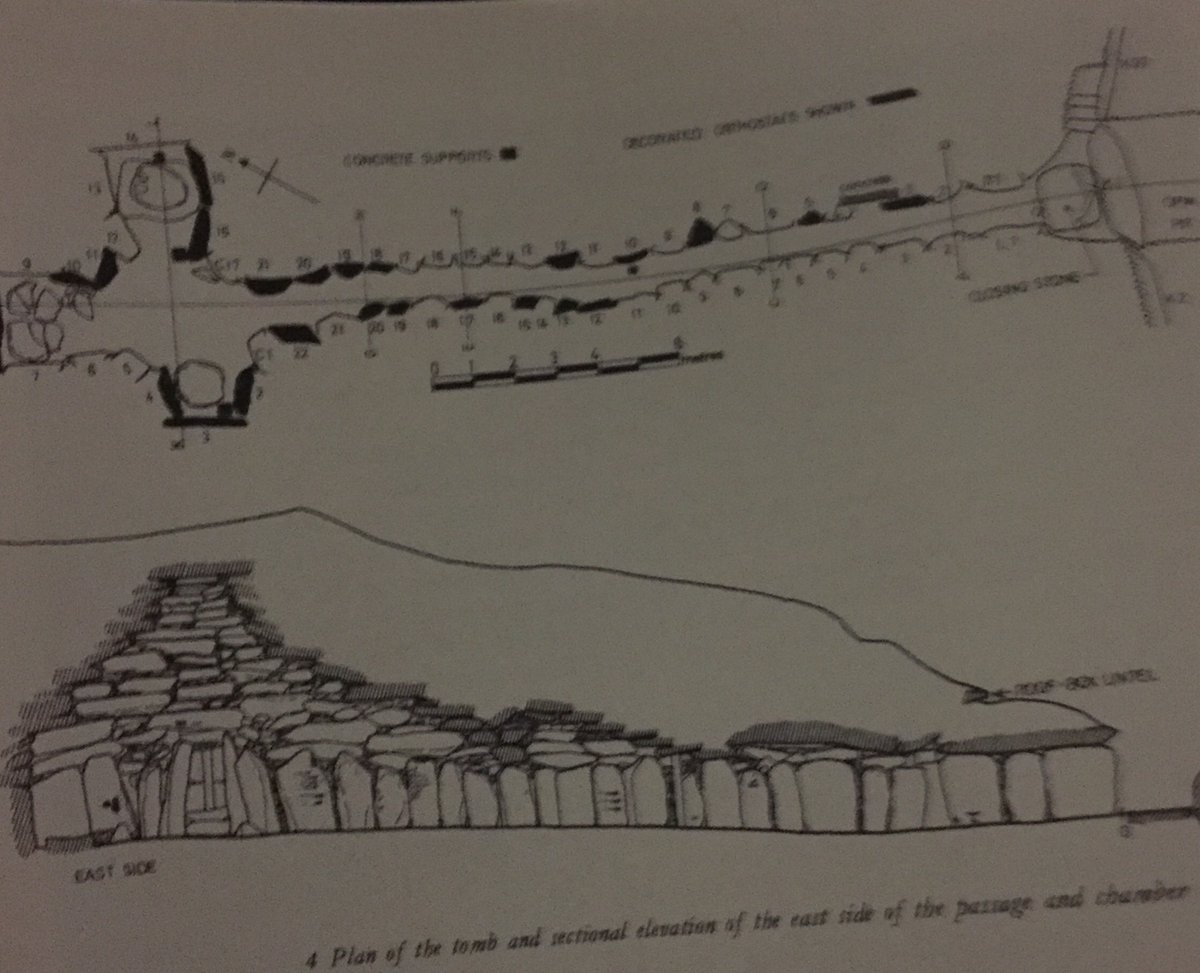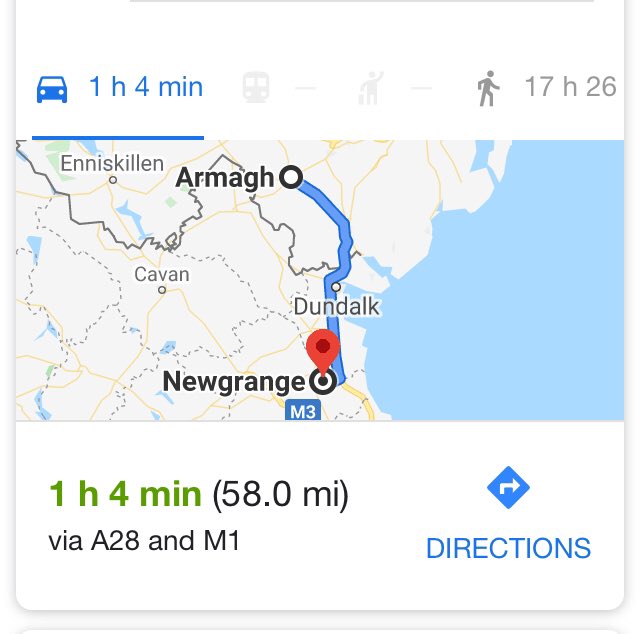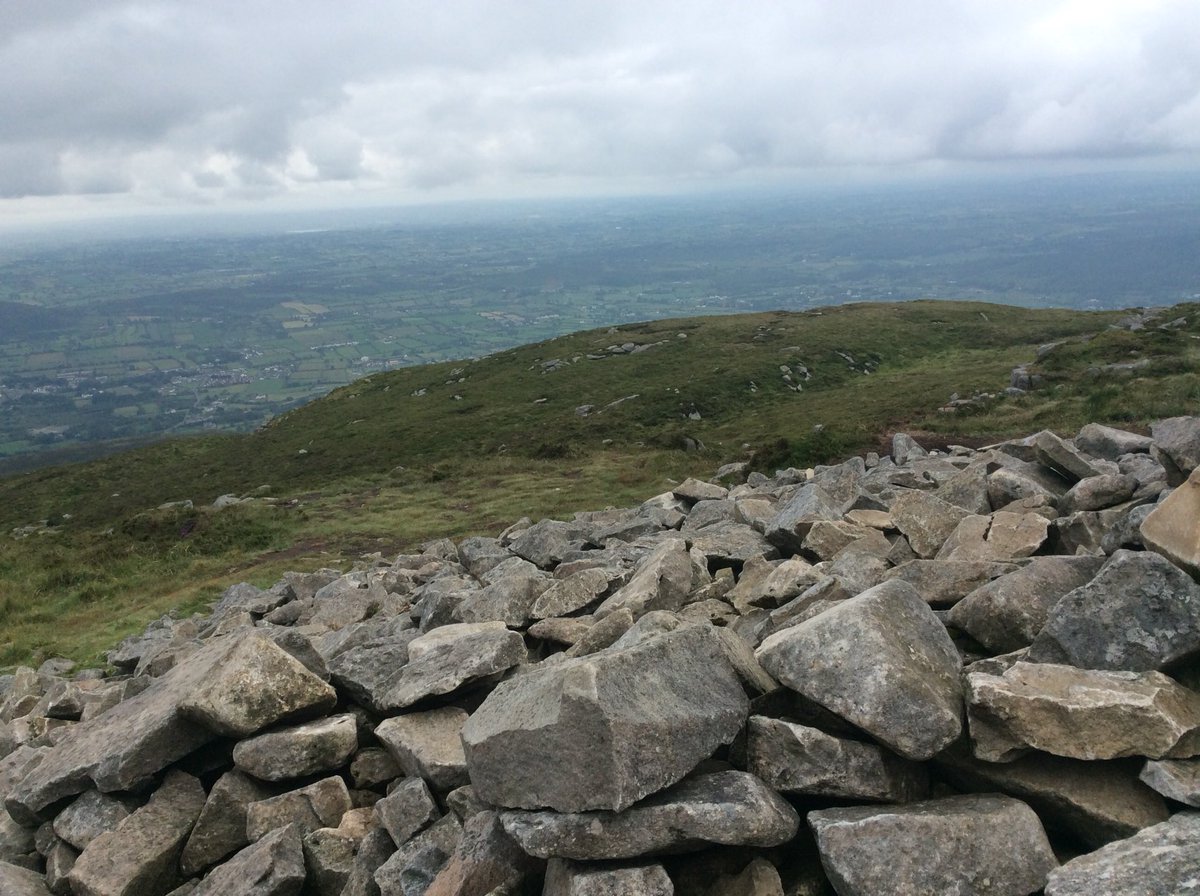
To try to get an impression of how old Newgrange is: if we start from today and go back to the heyday of the Babylonian empire of King Nebuchadnezzar - we need to go back the same length of time again to find the beginning of Newgrange 3200BC #Newgrange
If your ancestor was one of the people who built Newgrange, she would be your great, great, great ....... grandmother X 200 greats #Newgrange
The building of Newgrange was a massive undertaking in terms of complexity and labour. The first thing that needed to be done was to choose a site. Overlooking the Boyne was no accident - the River of the Cow Goddess (Boinne) of later times hints at her antiquity #Newgrange
Having found the site, a ground plan was laid out. By who? A king, a priest - definitely an engineer, this requires precise calculations. The rising sun at the solstice illuminates the back wall of the chamber -700 years before the pyramid of Giza #Newgrange
They built the passage & chamber first - erecting massive stones to define the passage walls. Some of the stones weigh up to 10 tonnes - remember, this is the Neolithic - no metal tools - if you want to dig up the massive stones, your pickaxe is a deer antler #Newgrange
97 massive stones make up the kerb, the smallest a tone weight while O’Kelly estimated that another 450 slabs were used in the structure itself. Some of these came from as far away as Wicklow and the Mourne mountains #Newgrange
The passage is 19 meters long. As it is built on a hillside, the floor of the passage rises as it approaches the chamber, leaving the roof box, thro which the solstice sun shines, level with the floor of the chamber - a good bit of math in that #Newgrange
The chamber is cruciform in shape, constructed of massive stones and roofed by overlapping rows of stone - corbelling. A massive cap stone sits on top #Newgrange 

The roof box was built next. Here the solstice sun enters the passage, makes its way along the floor before illuminating the artwork in the interior of the chamber. It will work almost as well tomorrow morning as it did 5000 years ago #Newgrange 

I say “almost as well” because, could you believe it, Newgrange is so old that the earth has tilted on its axis since Newgrange was first built, putting the Neolithic engineers calculations out by a few degrees #Newgrange
Roof box, passage, chamber and kerb stones in place - now the craic really starts. You have to pile up 300,000 tonnes of stones and turned to make the cairn - remember no metal tools, wooden shovels, leather sacks. Back (and heart) breaking work #Newgrange
O’Kelly reckons it would take 400 workers each carrying ten 50kg sacks of stone each day for two months (they also had to farm) from a quarry 750 meters away sixteen years to build the cairn. #Newgrange
So tomorrow when the sun rises on the Boyne, penetrates the roof box, makes its sculpted way along the passage and illuminates the chamber, we can smile to ourselves with a certain pride knowing that our great grandmother (x200) built this #Newgrange 



@threadreaderapp unroll
• • •
Missing some Tweet in this thread? You can try to
force a refresh
















